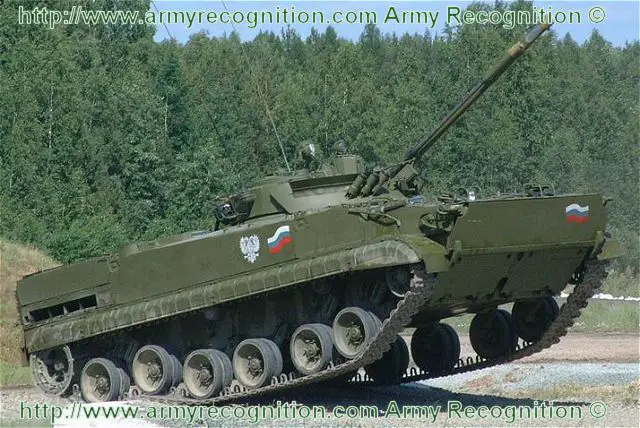|
|
|||
|
Defence & Security News - Vietnam
|
|||
|
|
|||
| Vietnam could order a batch of BMP-3F Russian amphibious armoured infantry fighting vehicles. | |||
|
Vietnam may order a batch of Russian amphibious vehicles BMP-3F, according to a source in the Russian defense industry. The BMP-3F Marines fighting vehicle is based on the BMP-3 IFV. It was designed to increase fire power, mobility and protection of Infantry Naval Forces.
|
|||
|
|
|||
 Russian-made BMP-3F amphibious armoured infantry fighting vehicle. Russian-made BMP-3F amphibious armoured infantry fighting vehicle. |
|||
|
|
|||
|
"The Naval Infantry of the People`s Army of Vietnam`s (PAVN) Navy desperately lacks modern amphibious armoured vehicles that can provide fire support during landing. In late July, the PAVN`s Navy conducted an island recapture exercise in order to practice over-the-beach landing. The service used such obsolete military hardware as PT-76B light amphibious tanks, BTR-60PB armoured personnel carriers (APC), and two Project 771 (NATO reporting name: Polnochny-class) tank landing ships. We need hardly mention that the Navy and the Naval Infantry recaptured the island, having destroyed the forces of the imaginary enemy. At the same time, the PAVN revealed its extremely weak arsenal of amphibious vehicles" the source said.
If Hanoi had been fighting against a real enemy, for instance, the People`s Republic of China (PRC), the Vietnamese naval task force would have been totally defeated. They did not have armoured vehicles to provide fire support afloat. A PT-76B tank cannot destroy even medium-armoured infantry fighting vehicles (IFV), let alone heavy main battle tanks (MBT) and engineer installations. I suppose that the PAVN`s Navy does not have a chance to recapture an island in the real combat environment. However, Hanoi is considering the possibility to acquire a batch of modern amphibious vehicles for the service. We have offered to Vietnam two types of vehicles, namely, BMP-3F (F stands for Marinized, Flotskaya) IFV and 2S25 Sprut self-propelled anti-tank guns (SPATG). The PAVN`s Navy has shown its interest in the acquisition of both vehicles," added the source. According to the Military Balance 2016 handbook issued by the International Institute for Strategic Studies (IISS), the Vietnamese Armed Forces operate 300 PT-76/PT-76B and 320 Type 62/63 (a licensed copy of PT-76 manufactured by the PRC) light amphibious tanks, as well as 1,100 BTR-40/BTR-50/BTR-60/BTR-152 APCs. The PT-76 light amphibious tank was developed in the 1950s. It has received 76mm D-56T rifled gun that cannot pierce the armour of modern MBT due to low caliber and muzzle velocity. D-56`s armour-piercing capability reaches 110mm at 1,000 m, using UB-354N armour-piercing caliber-reduced (APCR) rounds. The vehicle`s armour protection is extremely weak, as PT-76 is protected at Level 2 STANAG 4569 (all-round protection against 7.62mm steel-core armour piercing bullets at 30 m). Both BTR-50 and BTR-60PB have the same protection, while lacking anti-tank weapons. At the same time, the acquisition of BMP-3F and/or 2S25 Sprut vehicles could turn the tide. For instance, BMP-3F has an extremely high anti-personnel capability, as the IFV is armed with 100mm 2A70 launcher-gun and 30mm 2A72 automatic cannon. 2S25 Sprut armed with 125mm 2A75 smoothbore cannon that fires 3VBM19 Mango armour-piercing fin-stabilized discarding sabot (APFSDS) rounds and 9M119M Invar (AT-11 Sniper) anti-tank guided missiles (ATGM) can destroy all types of modern MBTs. Hence, the acquisition of the aforementioned Russian vehicles will significantly increase the combat capabilities of the Vietnamese Naval Infantry. |
|||
|
|
|||
|
© Copyright 2016 TASS. All rights reserved. This material may not be published, broadcast, rewritten or redistributed.
|
|||
Vietnam could order a batch of BMP-3F Russian amphibious armoured infantry fighting vehicles TASS 10408164
- Posted On














